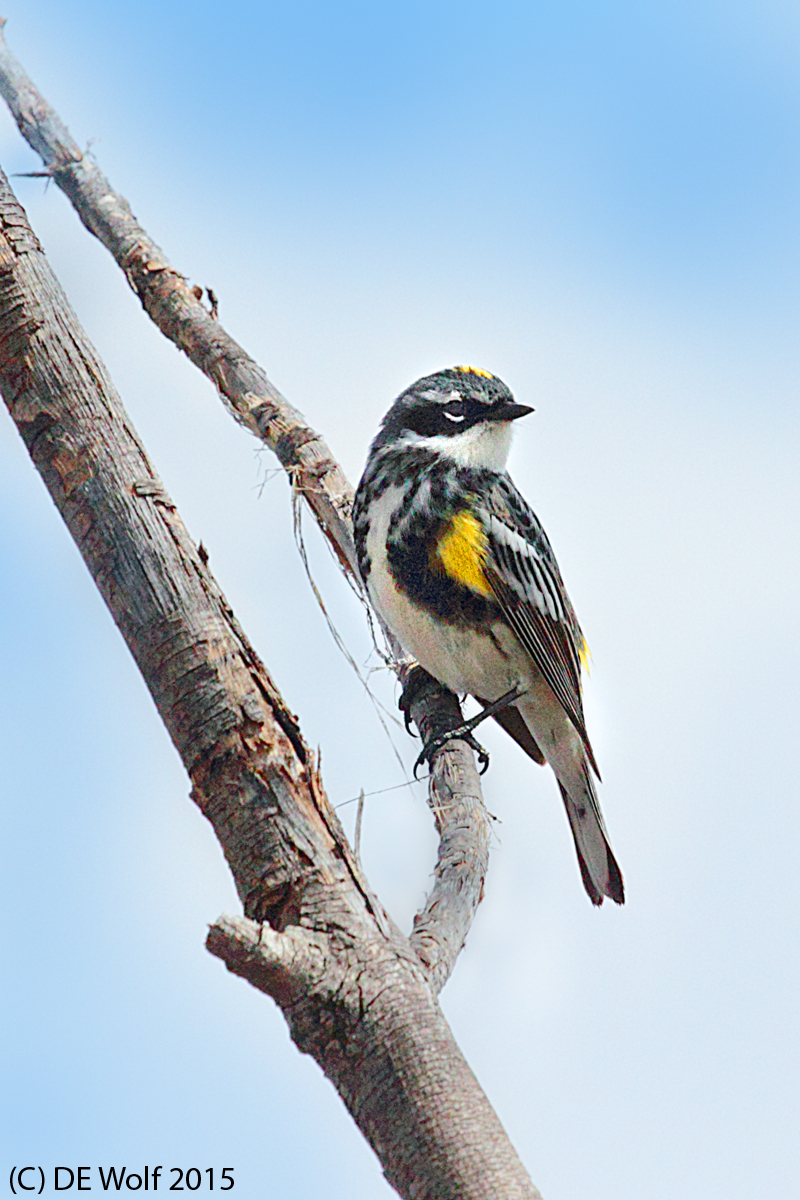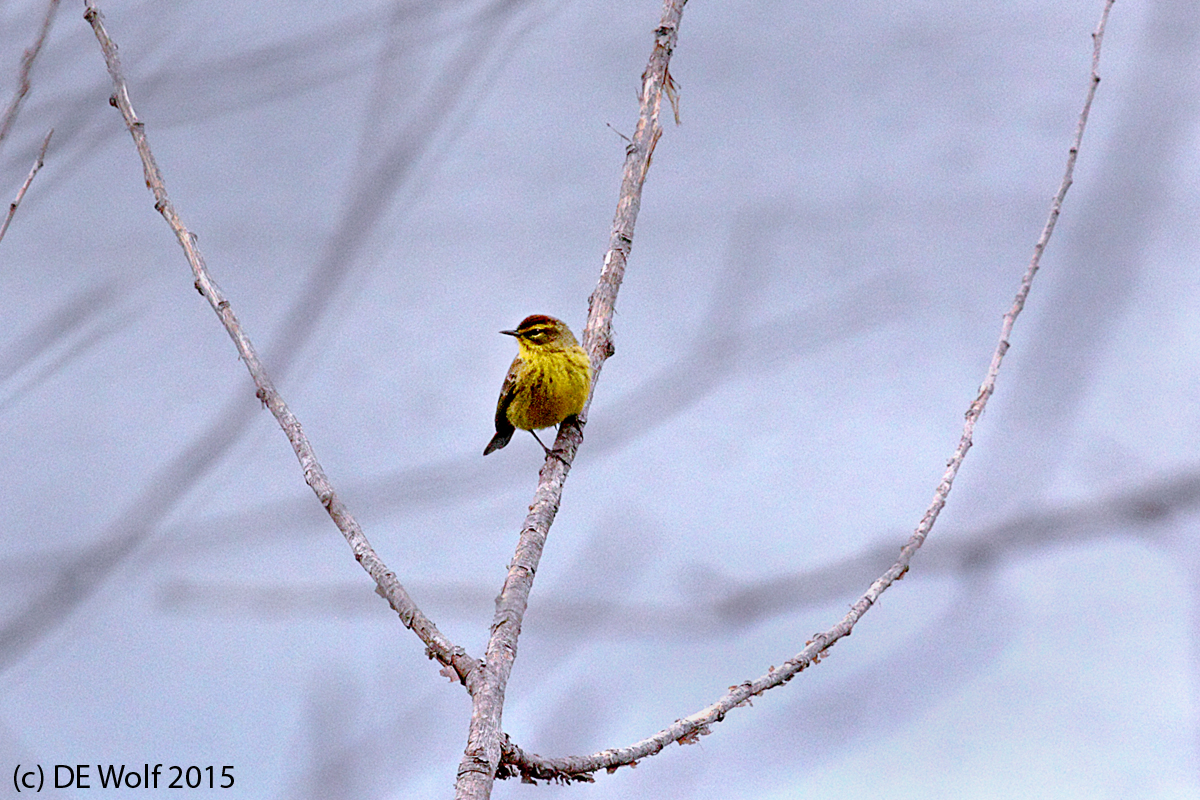
Figure 1 – Yellow rumped warbler, Fresh Pond Reserve, Cambridge, MA, April 23, 2015, (c) DE Wolf 2015.
On Thursday (April 22) and Friday (April 23) I saw my first warblers of the year at Fresh Pond Reserve. Warblers are not necessarily closely related to one another. The name means one who warbles, a singer or songster. And it is for their songs that bird lovers so anxiously await them each spring. They can be a challenge to the photographer as they move quickly and like to hide in bushes and scrub. I have decided that the best way to go after photographs of small birds is to use my 70 to 200 mm which is highly mobile and doesn’t interfere with my walks, but that invariably requires a lot of cropping, which can sacrifice resolution. So it is a challenge, but a fun one.
I am quite pleased with the way that Figure 1 of a yellow rumped warbler – Setophaga coronata – came out. He gave in to patience and due diligence on my part. He was against the dreaded white sky. But fortunately, there were some blotches of blue, so ultimately pleasing.
On the other hand I remain dissatisfied with Figure 2, which shows a palm warbler – Setophaga palmarum. He was just too fast and too hidden to get a really good shot at. This will have to do as my species example until I get a better one. I compromised by not cropping too tightly, in that way to retain a reasonable level of sharpness.
Figure 1 – Canon T2i with EF70-200mm f/4L USM lens hand-held at 81 mm, ISO 1600, Aperture-Priority AE mode at 1/3200th sec at f/9.0 with +1 exposure compensation.
Figure 2 – Canon T2i with EF70-200mm f/4L USM lens hand-held at 200 mm, ISO 1600, Aperture-Priority AE mode at 1/2000th sec at f/9.0 with no exposure compensation.

